
Five-year-old Henley Wollack’s innocent love for swimming near Lake Michigan’s Green Island turned into a historic adventure during a recent fishing trip with her father, Tim. Mistaking the submerged wreckage for an octopus, Henley’s keen observation led to the discovery of something much more significant—an ancient shipwreck that had been lost to the depths of Lake Michigan for 152 years. Tim Wollack, realizing the historical potential, captured images of the mysterious find and shared them on social media. The pictures eventually caught the attention of the Wisconsin Historical Society, confirming Continue reading “5-Year-Old Girl Finds 152-Year-Old Shipwreck on Fishing Trip in Lake Michigan” »
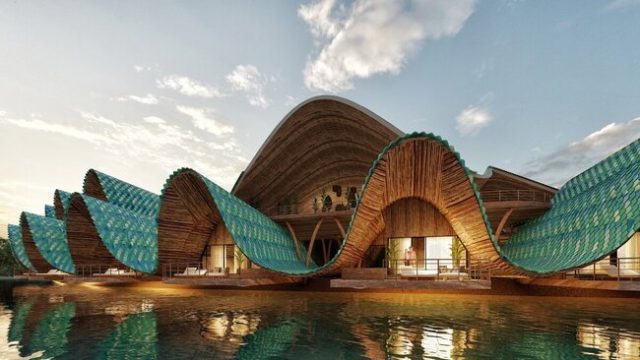
DNA Barcelona, a prominent Spanish architecture practice, unveils a groundbreaking concept with the Toh Kuyabeh, a holistic boutique hotel nestled in the verdant landscapes of Tulum, Mexico. This innovative project, developed for the KUYABEH Sustainable Ecological Community, draws inspiration from the ethereal flight of the Toh bird. The design intricately mirrors the bird’s shapes, feathers, and radial flight patterns, resulting in a unique architectural structure that seamlessly integrates with the tropical terrain, offering breathtaking panoramic views of the surrounding lagoon. Continue reading “DNA’s Solar-Powered Hotel Toh Kuyabeh Mirrors Ethereal Bird Flight Undulations in Tulum” »
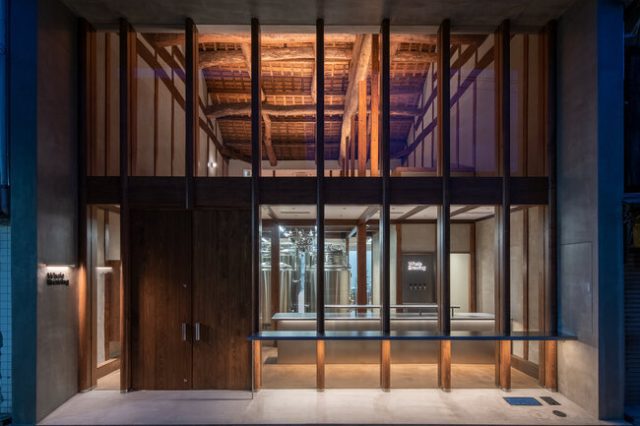
CASE-REAL’s transformative renovation of an 80-year-old traditional Japanese house into Whale Brewing, a craft beer brewery in Saga, Japan, represents a thoughtful response to the challenges faced by the town of Yobuko. Historically known for its whaling and later renowned for squid fishing during the Edo period, Yobuko now grapples with issues such as a declining population due to youth migration and a surplus of vacant houses. The Whale Brewing project emerged as a strategy to attract young people to the town and breathe new life into its cultural and economic landscape. The chosen location, an abandoned traditional house along the bustling Yobuko Asaichi-dori street, served as the canvas for this ambitious undertaking.
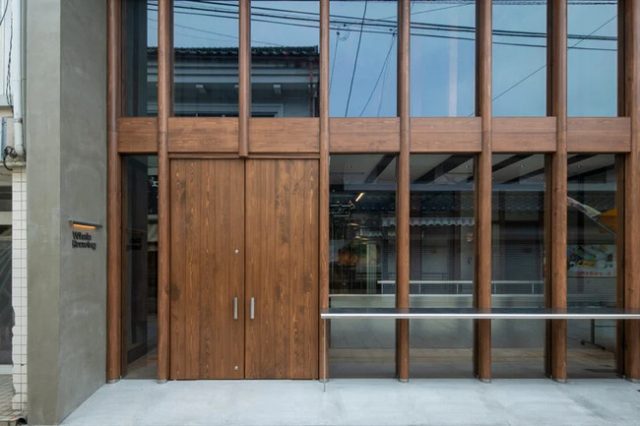
Upon careful examination, the architects at CASE-REAL discovered the hidden potential within the aging structure. The interior, despite suffering from leaks, facade deterioration, and structural problems, revealed a robust nine-meter-tall framework. Following extensive discussions with clients, the decision was made to preserve and incorporate the existing strengths of the house into the brewery’s new design. The resulting layout features a storefront area with a unique ceiling design on the facade side, while the brewing space creatively utilizes the generous height of the second floor through an open atrium. A continuous glass facade connects both levels, providing a captivating view of the lively street below and showcasing the brewing process.
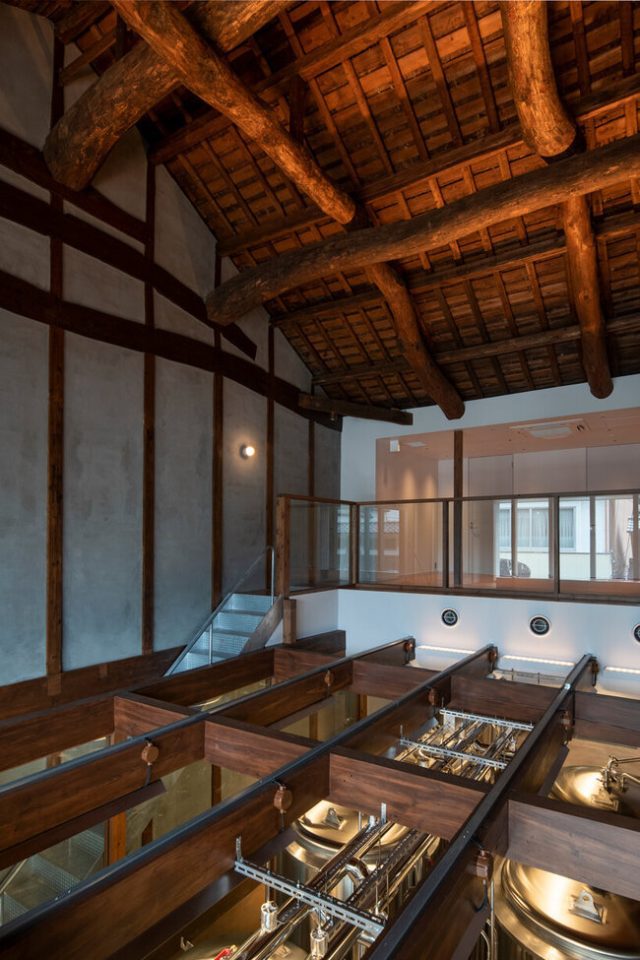
The architects’ meticulous attention to detail is evident in the choice of materials and design elements. Stainless steel, used selectively for components like the counter and handles, creates a cohesive aesthetic in harmony with the brewing equipment. The façade pillars, crucial for structural support, are crafted from solid Japanese cypress, introducing a touch of local authenticity and emphasizing the verticality of the space. The intentional incorporation of rounded shapes in the pillars and counter edges serves to soften the overall design, creating a seamless integration of structural elements with the brewery’s ambiance. The architects envision Whale Brewing as a new landmark firmly rooted in the local community, bridging the past with the present while providing a vibrant space for both locals and visitors alike.
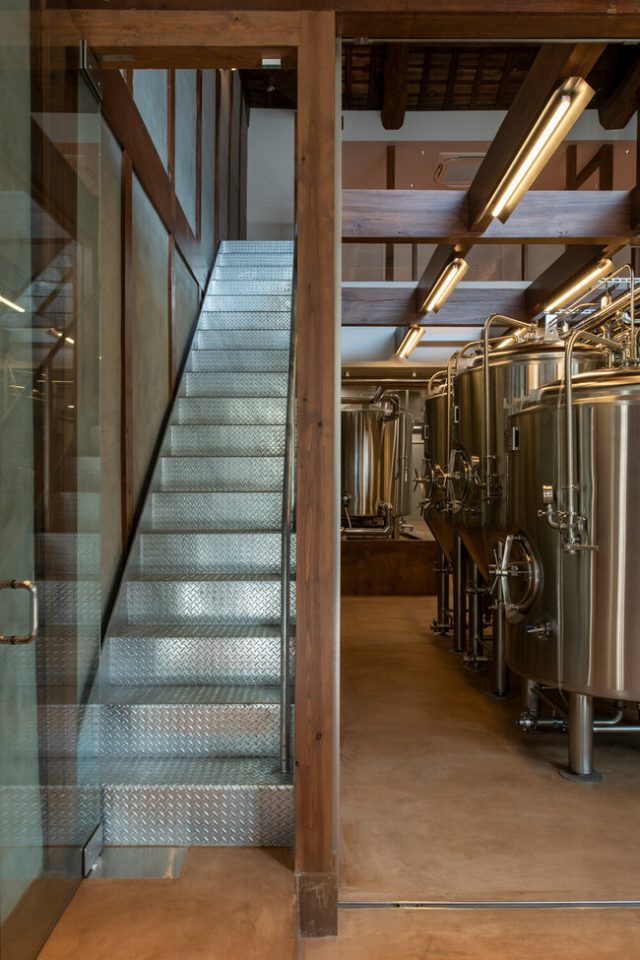
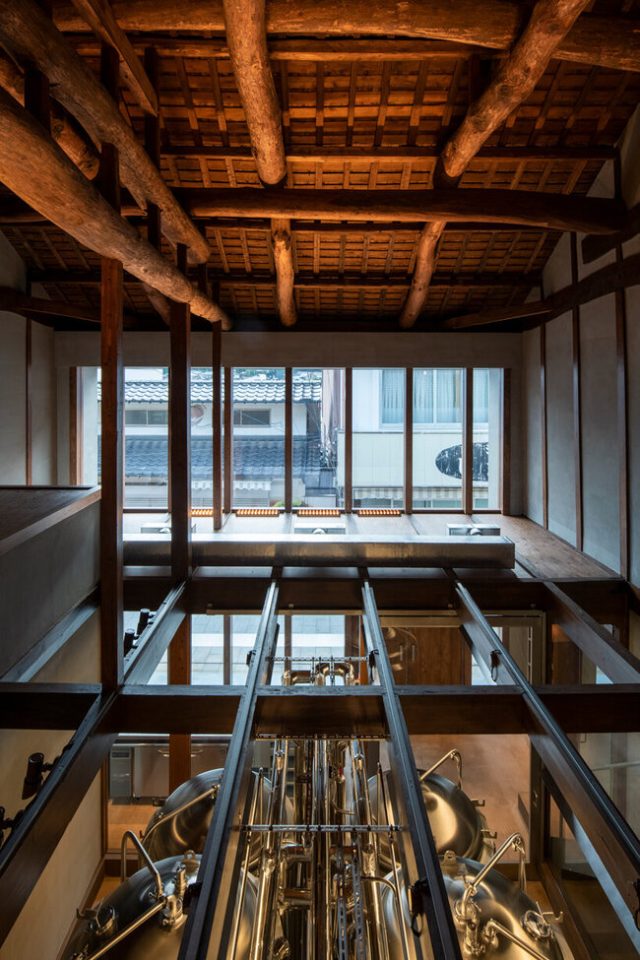
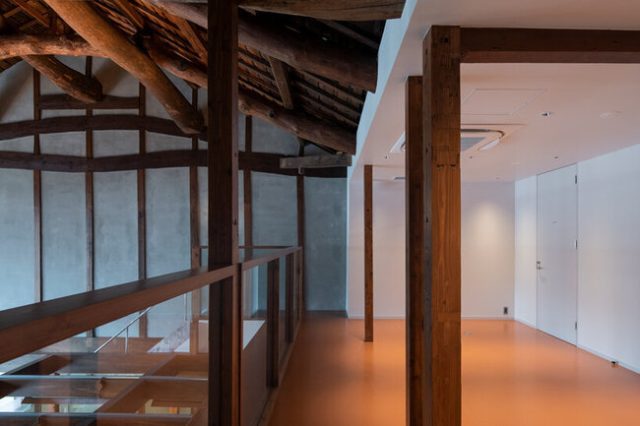
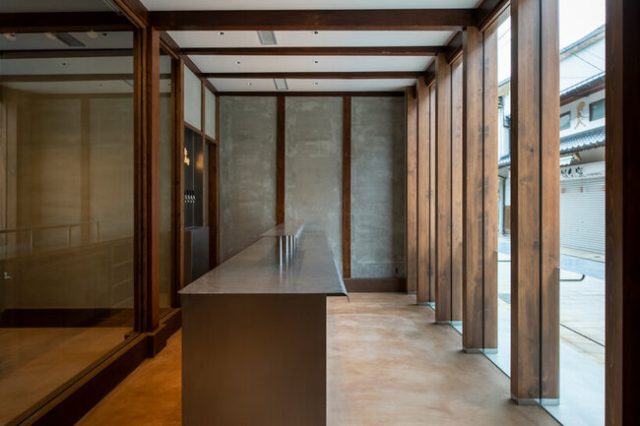
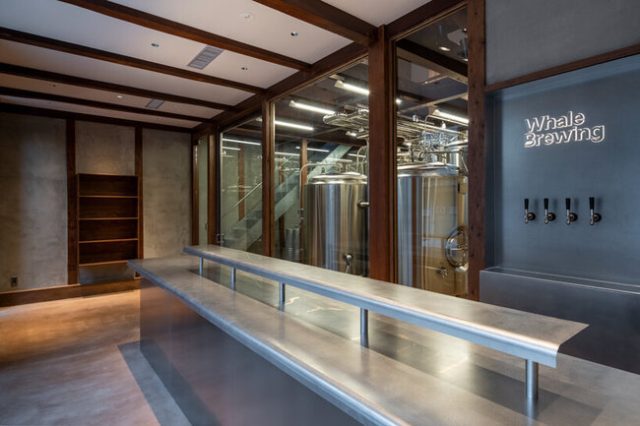
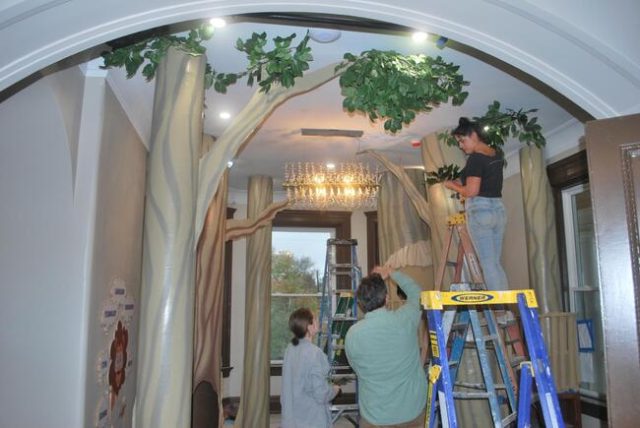
In the heart of Cincinnati, a gloomy afternoon turned vibrant as Brad McCombs, NKU’s Art & Design Program head, and a group of students gathered to transform the historic Holloway House into a haven for teen mothers facing homelessness. Amidst the challenges posed by the COVID-19 pandemic in 2020, Rosemary’s Babies Company, led by founder and CEO Rosemary Oglesby-Henry, recognized a critical gap in resources for homeless parents. Determined to make a difference, Oglesby-Henry acquired the Holloway House in 2022, which had sat vacant for over a decade, and enlisted McCombs to create a forest-inspired play area within.

The play area, named “Levi’s Learning Area” is a testament to McCombs’ multidisciplinary artistic vision. Using large tubes coated with papier-mâché and paint to resemble tree bark, the installation features crawl spaces and a treehouse-like balcony, offering children a whimsical yet educational space. The room is awash in earth tones, with a mural painted by McCombs outside depicting a tree adorned with leaves acknowledging the organization’s donors. This transformative project was made possible through the collaboration of McCombs and four students, who were compensated through the College of Arts and Sciences-sponsored Student Success Impact Mini-Grant.

Rachel Paxitzis, one of the contributing students, expressed the invaluable experience of witnessing the project’s progression from conception to completion. Aspiring to teach art at the college level and specialize in community art, Paxitzis saw the project not only as an opportunity to apply her skills but also as a meaningful endeavor that could positively impact the lives of young mothers and their children. With the doors to the Holloway House and Resource Center set to open in the spring of 2024, the project serves as a beacon of hope, providing a nurturing environment for families in need. Oglesby-Henry envisions a space where young mothers can find support, and children can thrive in a thoughtfully designed, forest-inspired play area that transcends the challenges they may be facing.


Physicist Dominic Walliman, known for his adeptness in creating comprehensive conceptual maps, has once again ventured into the realm of knowledge visualization with his latest creation—the Colorful Map of Plants. Recognizing the inherent difficulty in comprehending the vast diversity and evolution of plant life, Walliman set out to construct a visually engaging and informative map that highlights both the differences and similarities within the intricate world of flora. Continue reading “Colorful “Map of Plants” Visualizes the Complex Diversity and Evolution of Our Planet’s Flora” »
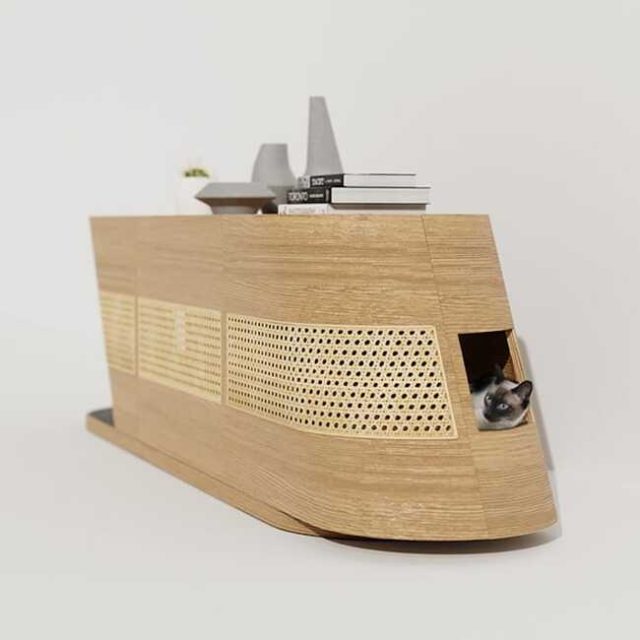
The Choo Choo console table, a brainchild of Portugal-based designer Ricardo Sá, ingeniously addresses the curiosity of feline companions. Recognizing the unstoppable nature of cats’ exploration, Sá has integrated a secret tunnel into this stylish piece of furniture. Aptly named after its bullet train-inspired Continue reading “Pet-Friendly Console Table Includes Secret Tunnel for Curious Cats” »

A breakthrough in textile technology inspired by the insulating properties of polar bear fur has yielded a remarkable fiber that can rival the warmth of down feathers while maintaining a significantly lighter and more flexible profile. The fiber, designed to mimic the porous hairs of polar bears, features a core filled with thousands of tiny air pockets, preventing heat loss, and is enveloped in a waterproof sheath, akin to the bears’ fur. The core, however, is crafted from Continue reading “Fiber Inspired by Polar Bears Traps Heat as Well as Down Feathers Do” »

Excessive artificial lighting in gardens poses multifaceted challenges to both the natural world and human well-being. The impact of light pollution extends beyond mere annoyance; it disrupts the delicate balance of ecosystems and interferes with the behavior and life cycles of various species. In rural settings like the Irish countryside, Continue reading “Tone it Down: Why Too Much Artificial Lighting is Bad for Your Garden” »

Engaging school children in gardening and food preparation classes can have a profound impact on their lifelong eating habits, according to a recent study conducted by the George Washington University Milken Institute School of Public Health. Participants in a gardening and food education program, specifically the FoodPrints program offered in 20 elementary schools in Washington, D.C., reported increased confidence in choosing healthy foods and preparing nutritious dishes. The positive habits cultivated during the program persisted as the children grew older and influenced their dietary choices even into adolescence. Continue reading “Getting School Kids Gardening Pays Off for Eating Habits” »




































